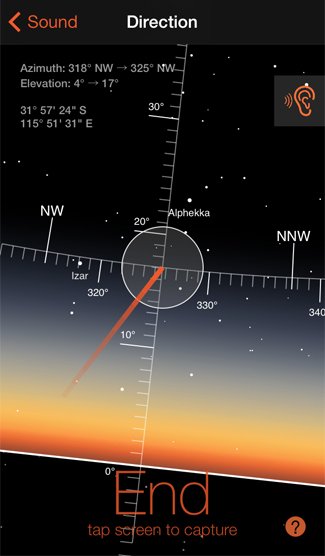Amateurs can track meteorites with iPhones

FOR THE FIRST TIME, armchair astronomers around the world can help gather important meteorite data simply by switching on their phones.
‘Fireballs in the Sky’ is a new smartphone app developed by researchers at Curtin University in Perth, which allows users to track the paths of meteors and fireballs as they streak through the night sky.
Researchers then analyse the data and send users information about how the fireball they reported was formed, how fast it was travelling and where it originated in the Solar System.
“Anyone can report a sighting,” says Professor Phil Bland, a planetary scientist from Curtin University, WA, who was involved in developing the app.
All a user needs to do is hold their phone up to the sky after sighting a meteorite. A star map will appear on the screen. Users can then indicate where the meteor started and where it ended.
Report a meteorite sighting
“You can also log information such as the duration of the fireball, the colour, how bright it was and whether it was fragmented or not,” says Phil. The app is designed to allow users to generate an animation of the fireball they saw.
“So if there was a big bright flare, you can pick that option and on the screen you’ll see a fireball with a big bright flare,” says Phil. “You can then change the colour of the fireball; you can change its speed; and you can play around with the animation until it replicates what you saw.”
Curtin University researchers will then analyse the data. “If we get enough observations we can determine a trajectory and send that information back to you – for instance, you might get a message saying that the rock that made your fireball came from the outer asteroid belt, or that it was a chunk of a comet,” says Phil.
The information researchers collect from the public will be added to a databank collected through the Desert Fireball Network (DFN), a project that aims to collate Australian meteorite data. The DFN features a series of digital cameras that have been set up in remote locations in the Australian outback to capture images of the night sky.
“If we can get enough people interested in it and enough people downloading the app and using it then we’ll be able to do some exciting research,” says Phil. “We’ll be able to recover meteorites that we would never have found and to spot meteorite showers that we would never have seen. It’s a really exciting project.”
RELATED STORIES

